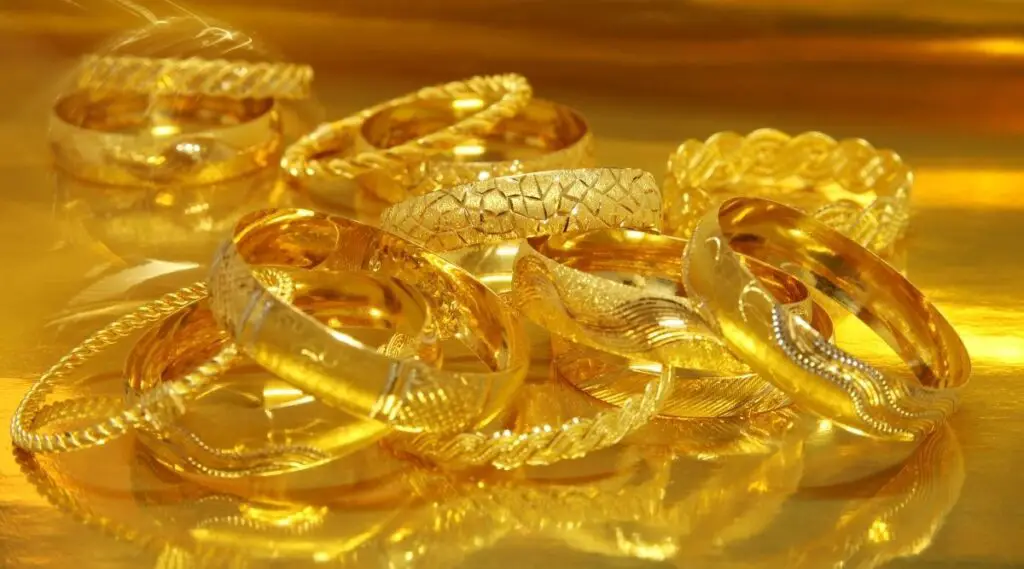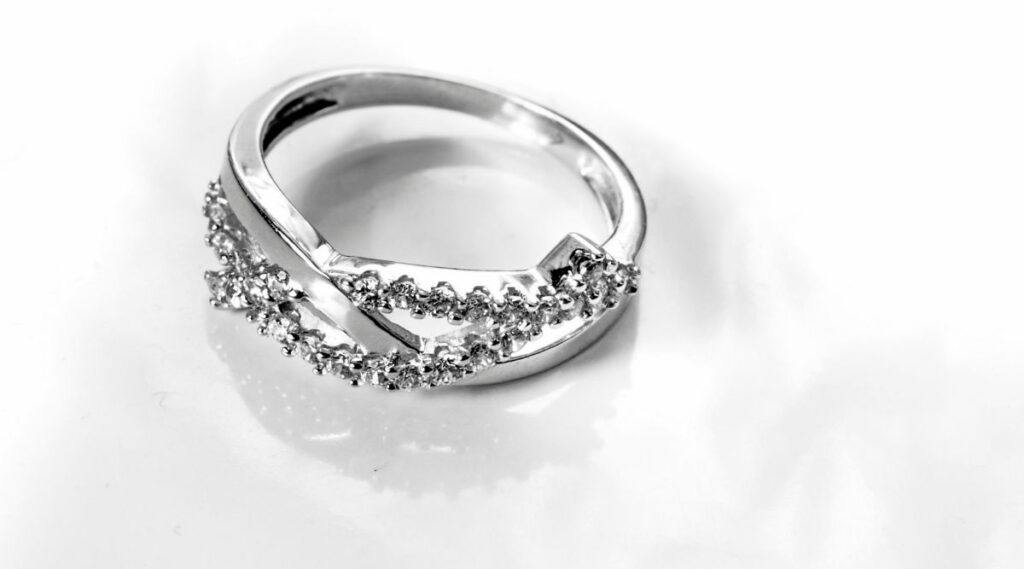You’ve probably heard a few references to yellow gold, rose gold, and white gold when shopping for jewelry, watches, or gold as an investment.
But, you might not be totally aware of the difference between them, what effect buying yellow or white gold will have on your investment, and what they actually are. Read on to learn all you need to know about yellow gold, as well as its advantages and disadvantages.

Table of Contents
What Actually Is Yellow Gold?
Yellow gold is the naturally occurring precious metal that you think of when it comes to gold. It is totally natural, and in its purest form, is not combined with any other kind of metal after it has been mined from the earth.
Naturally, it is a very soft metal, and when pure, it will easily bend out of shape.
This means that for most jewelry, yellow gold (or simply gold) has to be mixed with harder, less malleable alloy metals, so that it becomes more durable, and keeps its shape far better.
How much pure gold is mixed into the alloy determines the karatage of your yellow gold jewelry. The karatage value is:
- 24 Karat gold is 99.9% pure gold.
- 22 Karat gold is 91.7% pure gold.
- 18 Karat gold is 75% pure gold.
- 14 Karat gold is 58.3% pure gold.
From this information, you can infer that the higher the karat amount means that it is a purer gold content, making it a more valuable metal.
However, on the other hand, a higher karat amount also means a less durable metal.
This means that, typically, 14 karats or 18 karat gold is usually the metal that is used in jewelry, especially for pieces that are worn every day, such as wedding bands.
What Are The Advantages Of Yellow Gold
The pros to yellow gold are that it is:
- The most hypoallergenic of all of the three colors of gold so is a good voice for those with allergies.
- Historically, it is the most popular gold option, often being used for wedding and engagement rings. Therefore, it is a great choice for setting jewels in a vintage or timeless style.
- It is the purest gold of all of the gold colors.
- It is the easiest to maintain the option of all of the colors of gold.
- It is the most malleable option and is, therefore, easiest for all of the jewelers to manipulate.
- The coloring of yellow gold is a great color for those with olive tones or darker skin colors, complementing your natural skin tones.
- Easily matches with diamonds that have a lower color grade.
What Are The Disadvantages Of Yellow Gold
However, there are also a few disadvantages associated with yellow gold, that you should be aware of before making a purchase.
These include:
- Yellow gold has to be polished and cleaned pretty regularly.
- It is easy to damage, and easily dents or scratches.
What Is White Gold?

White gold is one of the most popular precious metals, especially when it comes to important jewelry, like engagement rings, and wedding bands. It is a huge competitor to the popularity of white gold.
It is made of a mixture of pure gold and white metals, such as nickel, silver, and palladium, and usually has a rhodium outer coating.
Therefore, though white gold is real gold, it is not made entirely of gold, with other metals mixed in so that the metal is strengthened, and is more durable for use in jewelry.
The value of a white gold jewelry piece depends on its karat value (which typically is between 14 karats and 18 karats), and how much metal was used to produce the alloy.
The price of white gold ranges massively – the price of white gold rings, for example, can ve a mere $180 (for a more simple solitaire style), all the way to a huge $2500 (for a more intricate looking vintage ring setting).
In general, the cost depends on the vendor and the amount of white gold that is used in the design of your ring.
What Are The Advantages Of White Gold
There are a number of key advantages to having a jewelry piece made in white gold:
- It is more affordable than its look-alike, platinum.
- It is currently in style, and more popular than yellow gold.
- It has been combined with stronger metals than yellow gold has, making it a stronger alloy that is more durable and scratch-resistant.
- According to some, it might be a better metal to complement white diamonds when compared to yellow gold.
- It compliments rosy skin, and fair skin tones well.
What Are The Disadvantages Of White Gold
However, there are also a few disadvantages associated with white gold, that you should be aware of before making a purchase.
These include:
- White gold needs to be maintained by being dipped every few years to replace its rhodium plating so that it retains its color and metallic luster. This process is usually inexpensive, with some jewelers offering the service for free, however, it can be a bit of a hassle.
- Often, white gold has nickel mixed in to it, which can cause an allergic reaction in some. This means that typically, white gold is not hypoallergenic unless it is mixed with alloy metals that aren’t nickel.
What Is Rose Gold?
Rose gold is a form of gold, made by mixing pure gold with copper and silver metal alloys.
Like white gold, it is real gold but is not made entirely of gold. Metals such as copper and silver are sued both to strengthen the metal and to give it its distinctive coloring.
The more copper that is included in the mixture, the redder it will appear. The most common alloy mixture for rose gold is 75% gold and 25% copper (by mass).
The color of rose gold has made it popular, with the rose gold family of metals encompassing a whole range of red, rose, and pink colored gold tones.
What Are The Advantages Of Rose Gold?
There are a number of pros to owning rose gold jewelry, which includes:
- It is a really popular metal currently and is really in style.
- Considered by many to be one of the most romantic metals, because it is pink-colored!
- It is usually the most affordable choice because the copper alloy used to make rose gold costs less.
- It is a really durable metal because copper is very strong. This makes rose gold tougher than yellow and white gold.
- It compliments all skill tokes well.
What Are The Disadvantages Of Rose Gold?
However, there are also a few disadvantages associated with white gold, that you should be aware of before making a purchase.
These include:
- Rose gold may cause allergic reactions in some people, as it is not a hypoallergenic metal, because of the alloys that it is mixed with.
- It can be more difficult to get your hands on, as it is not as widely available as white and yellow gold, even though it is in style.
Final Thoughts
There are a lot of factors that come into play when you are choosing which metal to buy jewelry in, one of the most important is personal preference – so, you should always pick the metal that you prefer.
However, it is also helpful to consider the difference in all of the metals, including things like price and composition.
Source: What Is Yellow Gold?


